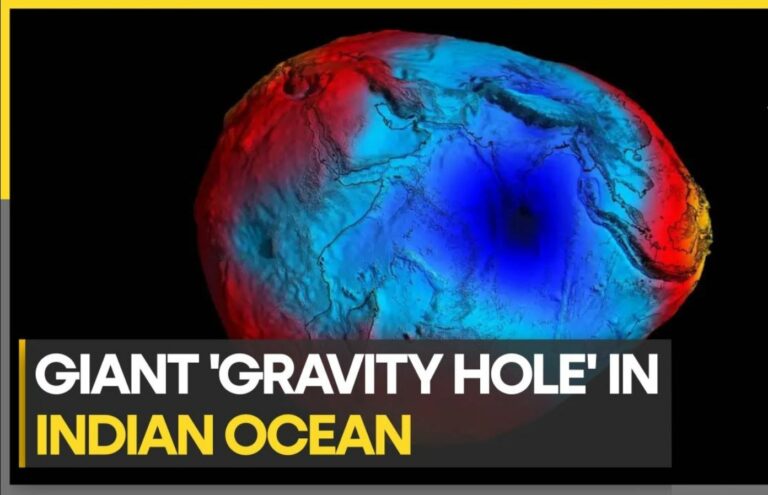Giant Mysterious ‘Gravity Hole’ Anomaly In The Indian Ocean Discovered
Scientists have long puzzled over a massive “gravity hole” in the Indian Ocean, an area where the gravitational pull is unusually low, causing the seafloor to sink. Now, two researchers from the Indian Institute of Science, Debanjan Pal, and Attreyee Ghosh, claim to have cracked the code behind this enigmatic phenomenon.
Their investigation led them more than 1,000 kilometers (621 miles) below Earth’s crust, where they discovered the remnants of an ancient ocean that had submerged into a “slab graveyard” beneath Africa approximately 30 million years ago. The interaction between this cold, dense oceanic material and the hot molten rock stirred up intriguing geophysical processes.
Pal and Ghosh meticulously retraced the geological history, spanning 140 million years, by simulating how tectonic plates glided over Earth’s mantle. They then compared the predictions from their simulations with observations of the massive geoid.
The critical insight came from the models that precisely reproduced the Indian Ocean’s geoid low in its current shape. They all shared one crucial factor: plumes of hot, low-density magma rising from the mantle beneath the low. These buoyant plumes, along with a distinctive mantle structure, were responsible for creating the geoid low, according to Pal and Ghosh.
The pair emphasized that the plumes needed to ascend to mid-mantle depths for the observed geoid low to match the simulations. The emergence of the first of these plumes occurred around 20 million years ago, south of the Indian Ocean geoid low, approximately ten million years after the ancient Tethys Sea had descended into the lower mantle. As these plumes gradually spread beneath the lithosphere and advanced towards the Indian peninsula, the intensity of the gravity hole heightened.
However, while Pal and Ghosh’s findings provide a compelling explanation, some scientists remain skeptical. More research is needed to validate and further comprehend the complex dynamics governing this intriguing geological feature in the depths of the Indian Ocean.
Do not forget to share your opinion with us to provide you with the best posts !




0 Comments